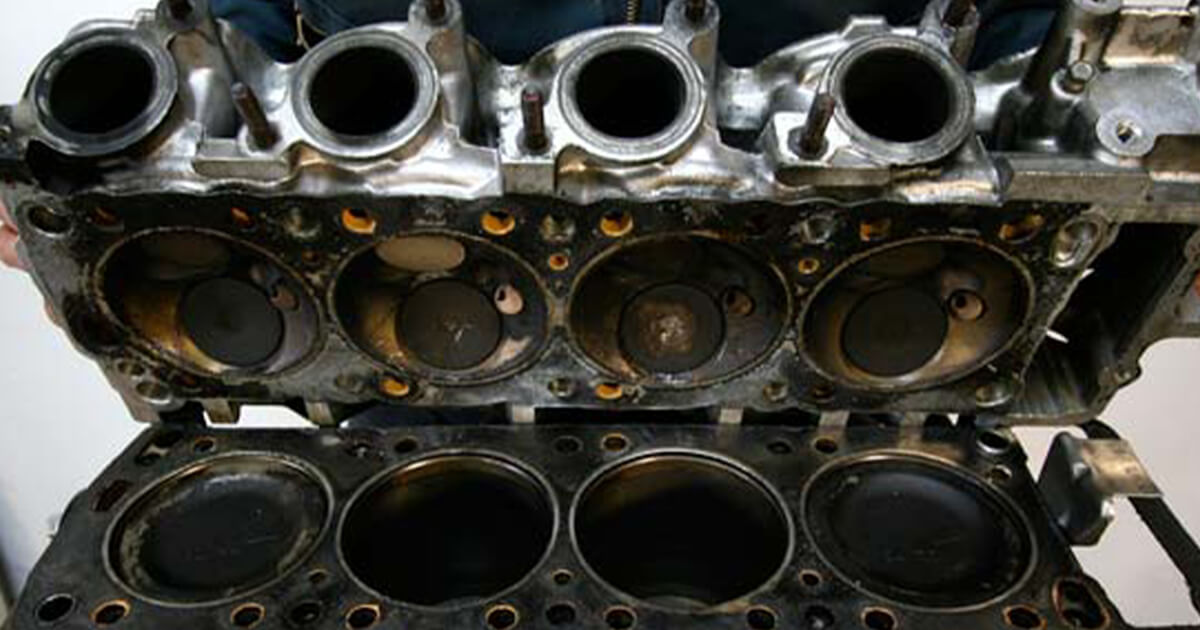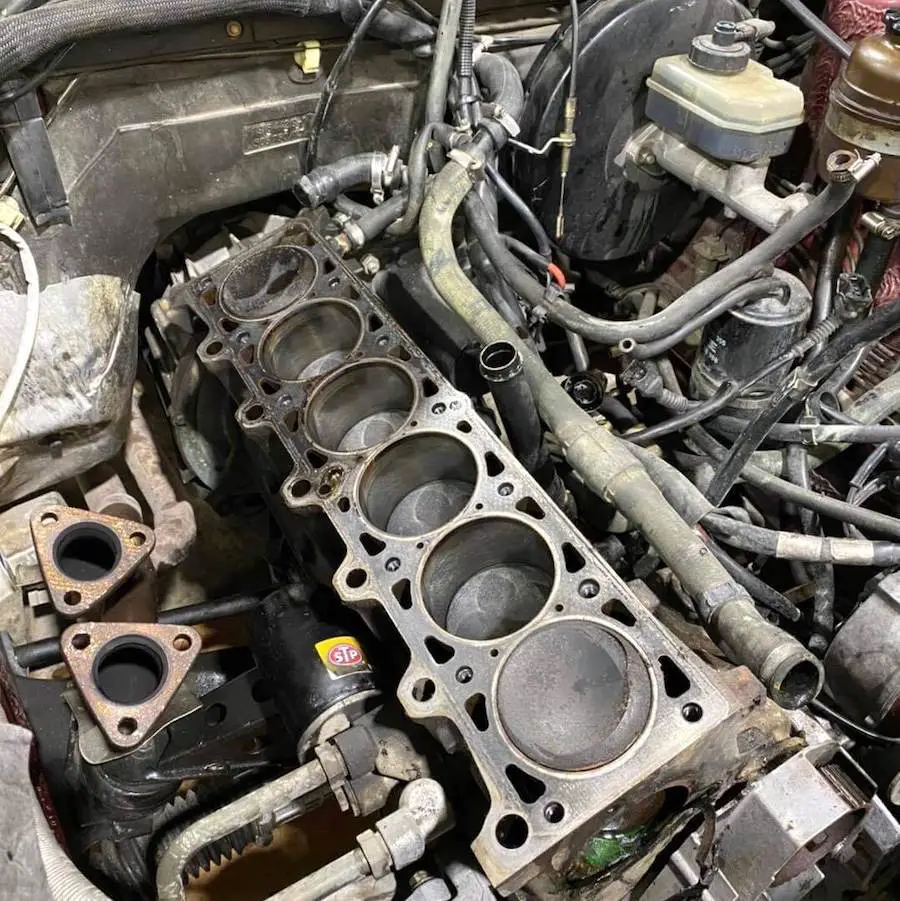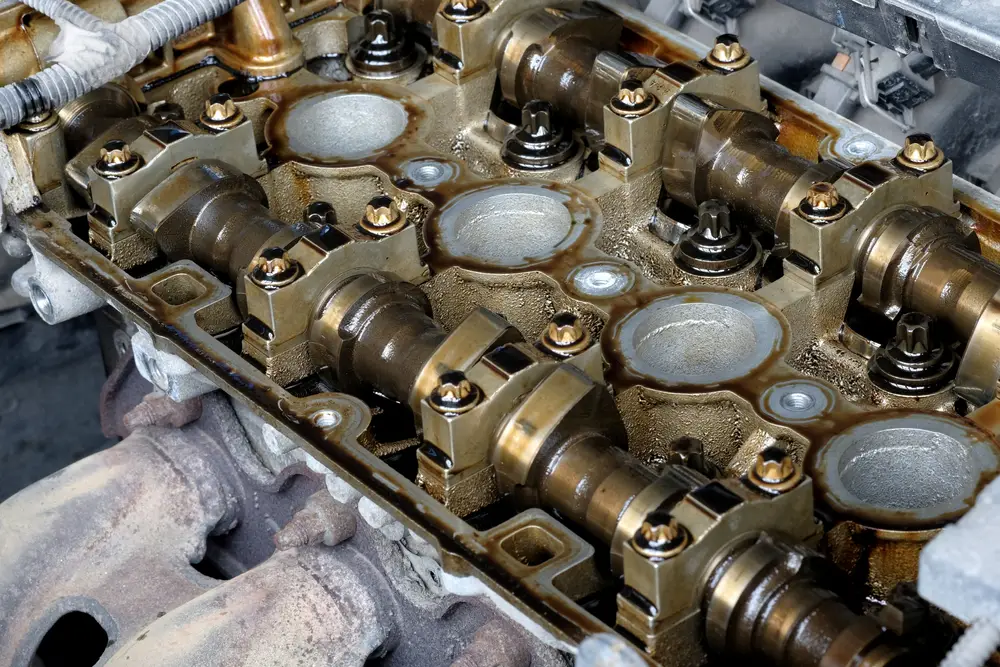Head gasket replacement is a complex task that involves removing the engine cylinder head and replacing the gasket. This repair is necessary when the head gasket is damaged, causing oil and coolant leaks or engine overheating.
It’s crucial to address this issue promptly to prevent further damage to the engine. A failing head gasket can lead to serious engine problems, so it’s essential to recognize the symptoms and take action. Common signs of a faulty head gasket include white smoke from the exhaust, engine overheating, and coolant or oil leaks.
If you notice any of these indicators, it’s important to have your vehicle inspected by a qualified mechanic. In this blog, we will explore the reasons why head gasket replacement is necessary, the symptoms of a failing head gasket, and the importance of addressing this issue promptly.
Contents
When does Head Gasket Needs Replacement
The head gasket needs replacement, when you notice the following sign –
White Smoke From The Exhaust
If you notice white smoke billowing from your exhaust, it could indicate a faulty head gasket. This smoke is often a result of coolant leaking into the combustion chambers and burning along with the fuel. It’s crucial to address this issue promptly to prevent further damage to your engine.
Overheating Engine
An overheating engine can be a sign of a failing head gasket. When the gasket fails, it can lead to a loss of compression, causing the engine to overheat. Keep an eye on your temperature gauge and address any overheating issues promptly to avoid more extensive and expensive damage.
Coolant Leak Under The Car
Finding coolant pooling under your car is a clear sign of a potential head gasket problem. The gasket may be allowing coolant to leak externally, which can lead to engine overheating and potential damage. Addressing this issue early can prevent costly repairs in the future.

Credit: www.mobil.com
Tools And Materials Required For Head Gasket Replacement
When it comes to head gasket replacement, having the right tools and materials is crucial to ensure a successful and efficient repair. Here are the essential items you will need:
Gasket Kit And Sealant
A gasket kit is an indispensable component for head gasket replacement. It typically includes all the necessary gaskets and seals required for the job. Make sure to choose a high-quality gasket kit that is specifically designed for your vehicle’s make and model. Additionally, you will need a reliable sealant to create a tight and leak-free seal between the head gasket and the engine block.
Engine Coolant And Oil
Prior to starting the head gasket replacement, it is essential to drain the engine coolant and oil. This step ensures a clean working environment and prevents any contamination during the repair process. Make sure to have enough engine coolant and oil on hand to refill the system once the replacement is complete. Always use the manufacturer-recommended coolant and oil for optimal performance and longevity of your engine.
Wrench Set And Torque Wrench
A wrench set is a must-have for any head gasket replacement. It allows you to loosen and tighten various bolts and nuts involved in the process. It is recommended to have a set of both standard and metric wrenches to accommodate different sizes. Additionally, a torque wrench is essential for tightening the head bolts to the specified torque value. This ensures proper sealing and prevents any future leaks or damages.
Ensure that you have the appropriate socket sizes and extensions to reach all the necessary bolts and fasteners during the replacement process.
How to Replace Head Gasket
When it comes to head gasket replacement, a step-by-step approach is essential for a successful outcome. Follow this guide to ensure a smooth process from start to finish.
Engine And Parts Removal
- Start by disconnecting the battery and draining the coolant.
- Remove the intake and exhaust manifolds, valve cover, and timing belt.
- Loosen the cylinder head bolts in a crisscross pattern to prevent warping.
- Gently lift off the cylinder head and place it on a clean, flat surface.
Cleaning The Cylinder Head And Block
- Scrape off any remnants of the old gasket using a gasket scraper.
- Clean the cylinder head and block surfaces with a solvent to remove oil and debris.
- Inspect for any damage or warping that may require machining or replacement.
- Ensure all surfaces are dry and free of any contaminants before proceeding.
Installing The New Head Gasket
Before installing the new head gasket, ensure the mating surfaces are clean and dry. Place the gasket carefully on the block, aligning any dowel pins or holes.
Lower the cylinder head onto the gasket, tightening bolts in the specified sequence and torque settings.
Reassemble all previously removed parts in reverse order, refill coolant, and start the engine to check for leaks.

Credit: m.youtube.com
Frequently Asked Questions
Here are some FAQs about head gasket replacement –
How Much Does It Cost To Replace A Head Gasket?
The cost of replacing a head gasket can vary depending on the make and model of the vehicle. On average, it can range from $1,000 to $2,000, including parts and labor. It’s best to consult with a professional mechanic for an accurate estimate.
Is It Worth Fixing A Blown Head Gasket?
Fixing a blown head gasket can be worth it depending on the age and condition of the vehicle. It can be a costly repair, but if the car is in good condition otherwise, it may be worth fixing. However, if the car is older or has other mechanical issues, it may not be worth the investment.
Can I Drive With A Bad Head Gasket?
Driving with a bad head gasket is not recommended. It can cause serious engine damage, leading to costly repairs. Symptoms of a bad head gasket include overheating, loss of power, and white smoke from the exhaust. It’s best to have the head gasket fixed before driving the vehicle again.
What Are The First Signs Of A Blown Head Gasket?
The first signs of a blown head gasket may include white exhaust smoke, engine overheating, and coolant leaks.
Conclusion
Head gasket replacement is important for engine health. Regular maintenance saves money. Trust professionals for this task. Stay informed about signs of trouble. Prioritize quality parts and service. Your vehicle will thank you with improved performance and longevity.





